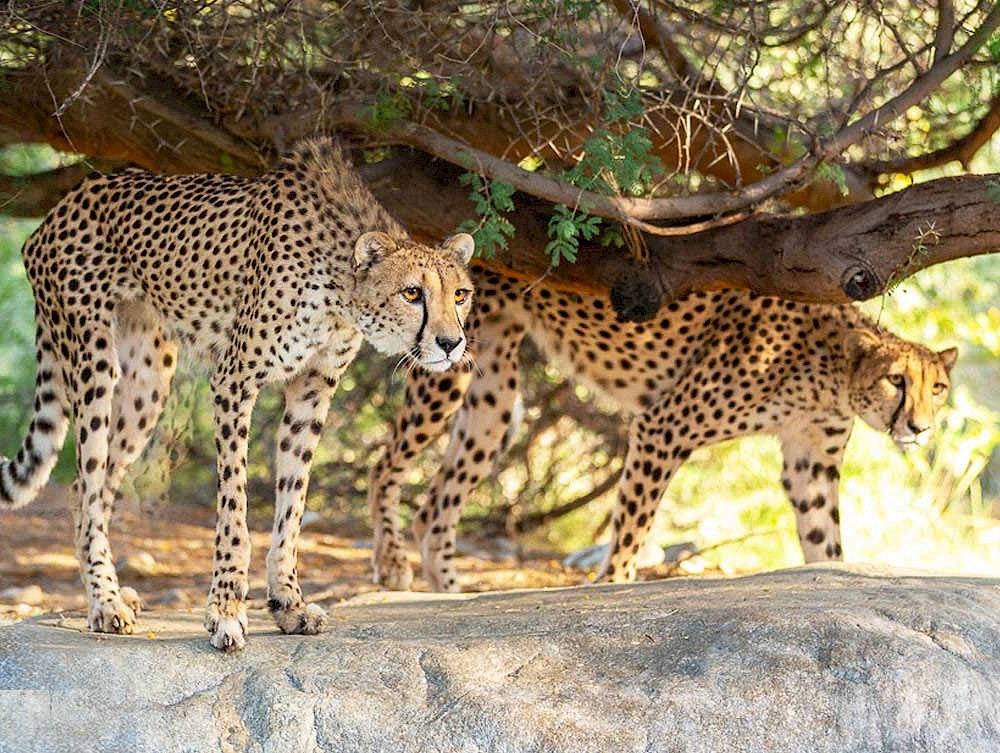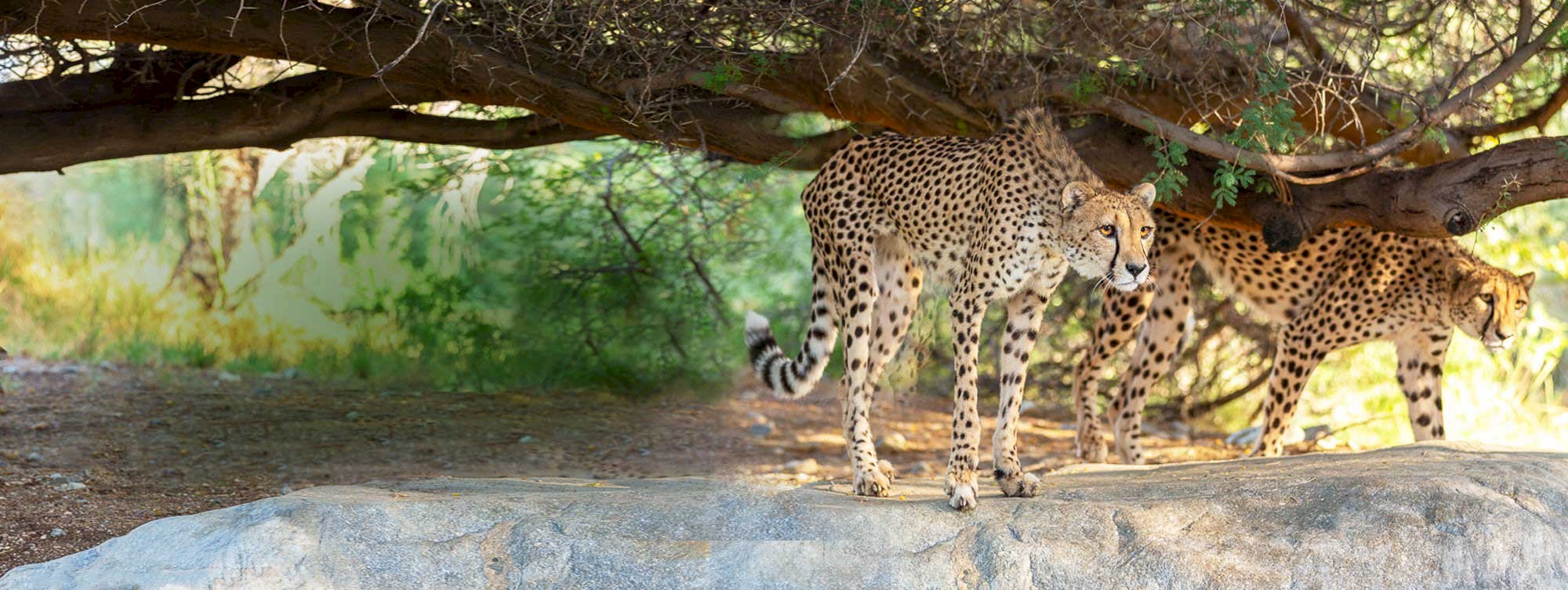Enriching Experiences
May 31, 2021
As the sun rises over the San Jacinto Mountains, the animal care team at The Living Desert Zoo and Gardens is hard at work setting up for the day in ways you might not expect.
A cut branch of acacia is being hung high for the giraffes, basil is being spread around for the bobcats, and the sound of thunder plays over a Bluetooth speaker within Australian Adventures. As guests enter the Zoo, they will see the giraffe using their tongues to strip leaves of the acacia or see the bobcats rubbing on the logs in their habitat, while artificial rain from a hose will spur the wallabies to huddle for cover.
The acacia, basil and rain shower are known in the zoo profession as “experiences.” The animal care team provides these enriching experiences to the animals daily with the goal of increasing their natural behaviors. In this case, the behaviors we hope to see include: the giraffe using their tongues to strip leaves off trees, scent marking by the bobcats, and grooming and licking water by the wallabies. Each experience is carefully curated with a particular behavioral goal in mind.
The Living Desert’s animal care team meets monthly to brainstorm these experiences for specific animal groups such as small carnivores, reptiles, or birds of prey. The team will select a specific behavior they want to see the animals doing more of, such as nest building for vultures. Because each species has different techniques and preferences for nest building, staff will brainstorm and research how each species naturally build nests, as well as what they need to be successful nest builders, in terms of both supplies and physical skills.
Equipped with the background knowledge and understanding, the team can then brainstorm what they can give the vultures to increase this behavior. In the video below, black vultures nest in caves, so the team decided to make a small cave for the vultures out of rocks and palm fronds. A few weeks later, the vultures were seen in the nest, sitting on eggs. Success! Even though the vulture’s eggs are infertile, as both are female, they still are displaying a natural behavior of nesting, which accomplishes the original goal of stimulating natural behaviors.
Everywhere you look at the Zoo, animals are displaying these natural behaviors, talents and skills that enhance their ability to thrive and promote their overall welfare, all with a little help from the care team.
Each experience is evaluated against the goals of the of the behavior itself, the outcomes observed if the behaviors are being accomplished, and the inputs provided to make it all happen. Did the experience accomplish the behavior it was set out to elicit? Thoughtful planning and preparation go into each of these experiences. Next time you visit, keep your eye out for these experiences and the natural behaviors they promote among the animals – big and small alike.
Did You Know...
- The Living Desert has an Animal Care Curator who is responsible for overseeing the behavioral programs of training, experiences, and welfare for the Zoo’s animal population? She works with curators, vet staff, and keepers to ensure the animals have high welfare and behavioral diversity.
- Experience making was part of the early design phase for the new Rhino Savanna. The animal care team worked with welfare specialists to design built-in experiences for the animals who will call Rhino Savanna home, such as puzzle feeders.
- Of the 550 animals who call The Living Desert our home, we aim to give experiences to everyone – everyday - from the smallest of frogs to the largest of giraffes!









